Leaving home for college is exciting and it’s easy to get distracted instead of planning what to bring. All students face this common challenge when they start college. Many freshmen arrive on campus and realize they left behind things they need every day. The list seems endless – from surge protectors to shower shoes.
Standard college packing lists often skip vital items that students only find they need after moving in. My four years of college experience and time spent helping new students move into dorms led me to create this complete guide. It covers everything from basic necessities to commonly forgotten items.
Students heading to their first semester or switching schools need a detailed list of what to bring. This piece covers 15 categories of must-have items that will help students thrive. Tech gadgets, study materials, personal care items and dorm essentials – we’ve got it all covered here.
Contents
- 1 Essential Electronics and Tech Setup
- 2 Bedding and Sleep Essentials
- 3 Study and Organization Tools
- 4 Personal Care and Hygiene Kit
- 5 Laundry and Cleaning Supplies
- 6 Kitchen and Food Storage
- 7 Clothing and Storage Solutions
- 8 First Aid and Medical Supplies
- 9 Room Decor and Comfort Items
- 10 Important Documents and Files
- 11 Entertainment and Social Items
- 12 Fitness and Wellness Gear
- 13 Emergency and Safety Items
- 14 Money Management Tools
- 15 Sustainable Living Essentials
- 16 Things to Bring to College Frequently Asked Questions
- 16.1 What do I need to bring for college?
- 16.2 What should a college freshman take?
- 16.3 What should I take the first day of college?
- 16.4 Where to start packing for college?
- 16.5 What size rug for dorm room?
- 16.6 How many clothes to pack for college?
- 16.7 Do you bring toilet paper to college?
- 16.8 How many towels do I need for college?
- 16.9 What bag do you bring to college?
- 16.10 What should I bring with me to my dorm?
- 16.11 What to pack for a dorm room?
- 16.12 How many shirts should I bring to college?
Essential Electronics and Tech Setup

Technology can make or break a student’s college experience in today’s digital world. The right tech gear should top your packing list as you head to college.
Must-have devices for modern learning
A reliable laptop serves as the life-blood of modern college education. Students need computers powerful enough to handle video requirements and computational tasks in the 2023-24 academic year. They also need adequate storage for new software. MacBooks are popular among students, but Windows laptops pack similar or more powerful specifications at better prices.
Recommended specs and budget options
These specifications will serve you well in a college laptop:
Component Minimum Specs Recommended Specs Processor Intel i5 (13th Gen) Intel i7 (13th Gen) RAM 8GB 16GB or higher Storage 256GB SSD 512GB SSD Price Range USD 500-1500 USD 1500-2000 Budget-conscious students will find excellent value in Windows laptops like the Acer Aspire 5 (USD 544.99) or Lenovo IdeaPad Flex 3i (USD 360.00). The MacBook Air (USD 999.00) remains a favorite choice among creative majors.
Essential accessories and peripherals
Students should think over these vital tech accessories:
- External storage solutions (500GB-1TB hard drive) to back up your work
- USB thumb drive (32GB minimum) to transfer files
- Noise-canceling headphones to stay focused during study sessions
- Portable charger to keep mobile devices powered
Most university buildings provide wireless networks and printing services at a small fee. A personal printer in your dorm room might save you during late-night assignments or emergency printing needs.
Bedding and Sleep Essentials
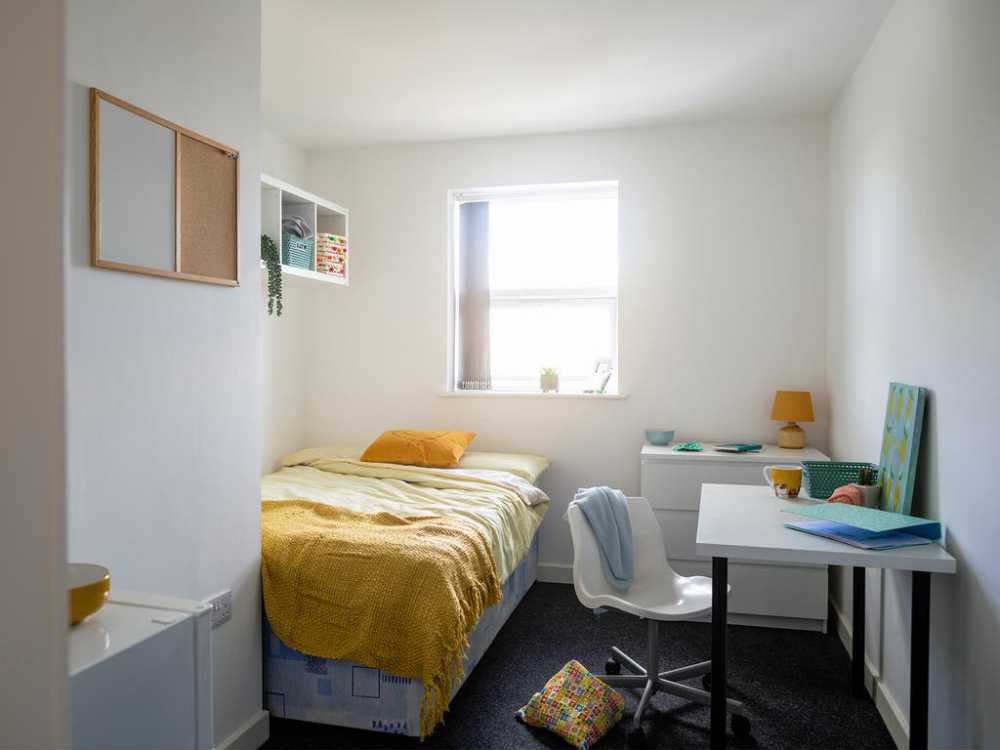
Quality sleep can mean the difference between acing your classes and burning out during college. Students need proper bedding essentials to create a comfortable sleep environment, and these items should top your college packing list.
Choosing the right mattress topper
Your mattress topper should be 2-4 inches thick to give you the best comfort. A good memory foam topper with cooling features can change an uncomfortable dorm mattress into a cozy sleep surface. Students usually go for latex or memory foam toppers that cost between USD 100 and USD 400.
Bedding size guide and recommendations
Twin XL size bedding fits most dorm beds. Here’s what you’ll need:
Bedding Item Essential Features Fitted Sheet Twin XL, deep pockets Flat Sheet Twin XL size Comforter/Duvet Twin or Twin XL Mattress Protector Waterproof, Twin XL Sleep accessories for better rest
Sleep accessories for better rest
You’ll need several key accessories to create the perfect sleep environment. The Alaska Bear Natural Silk Sleep Mask blocks out light effectively, and Mack’s Slim Fit Soft Foam Earplugs are a great way to get peace with their 37.1-decibel noise reduction rating. These items help you sleep better when your roommates study late or neighbors get noisy.
Research shows that just one extra hour of sleep can substantially boost your grades, friendships, and emotional well-being. Quality bedding affects your college success directly, so it’s worth the investment. Pack two sets of sheets that you can rotate regularly to keep your bed clean and fresh throughout the semester.
Study and Organization Tools
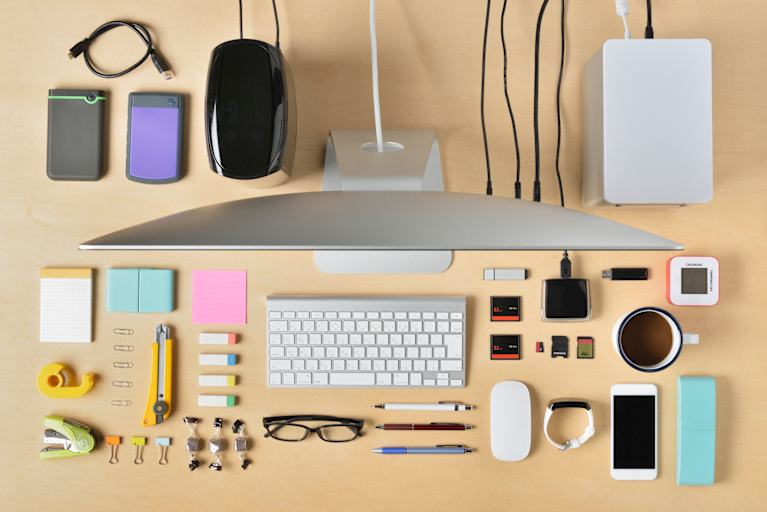
College students who excel know that organization leads to academic success. Research shows that 65% of students rely on planners to handle their academic work.
Digital vs physical organization systems
Students should think over their study habits and workflow before choosing between digital and paper planners. Digital planners shine with device syncing and team features, while paper planners help students remember better through handwriting. Students who take most classes online can try Rocketbook – a hybrid solution that blends physical writing with cloud storage.
Essential study supplies
A complete study toolkit needs:
- Simple supplies: Three-ring binders, loose-leaf paper, index cards, and highlighters
- Digital tools: iPad or tablet to take notes (63% of graduate students prefer this)
- Organization tools: Desk organizer with spaces for tablets and laptops
Storage solutions for small spaces
The right storage choices can turn a tight study area into a productive workspace. A desk organizer with spots for devices keeps cords tidy and makes tablets and laptops easy to reach. Pro tip: Lightweight drawers under your desk add vertical space and keep supplies close.
Smart storage investments should serve multiple purposes. A desk hutch adds storage space and uses wall space better for books and study materials. Clear containers and color-coding help students find items quickly during study time.
Personal Care and Hygiene Kit

Personal hygiene needs careful planning in college, especially if you share bathroom facilities. A well-laid-out personal care kit helps you adapt to dorm life by a lot.
Bathroom essentials checklist
Start with these simple categories:
Category Essential Items Basic Care Towels (2+), toothbrush, toothpaste, deodorant Shower Items Shampoo, conditioner, body wash, loofah Protection Shower shoes, waterproof caddy, sunscreen Accessories Hair dryer, styling tools, personal mirror Shower caddy organization tips
Shower caddy organization tips
Mesh shower caddies work better than plastic ones. They let water drain properly and stop mold from growing. Pro tip: Pick a caddy you can hang to keep it off bathroom floors. You should arrange your items based on how often you use them. This keeps daily items easily available.
Health and wellness supplies
You need a simple wellness kit that includes:
- Over-the-counter medications for common ailments
- First aid supplies including bandages and antiseptic wipes
- Digital thermometer for monitoring fevers
- Hand sanitizer and masks for illness prevention
A towel wrap is a great way to get from the shower to your dorm room in shared bathrooms. Keep your insurance card—digital or physical—handy for emergencies. Students with prescriptions should store them properly and keep enough supply throughout the semester.
Laundry and Cleaning Supplies
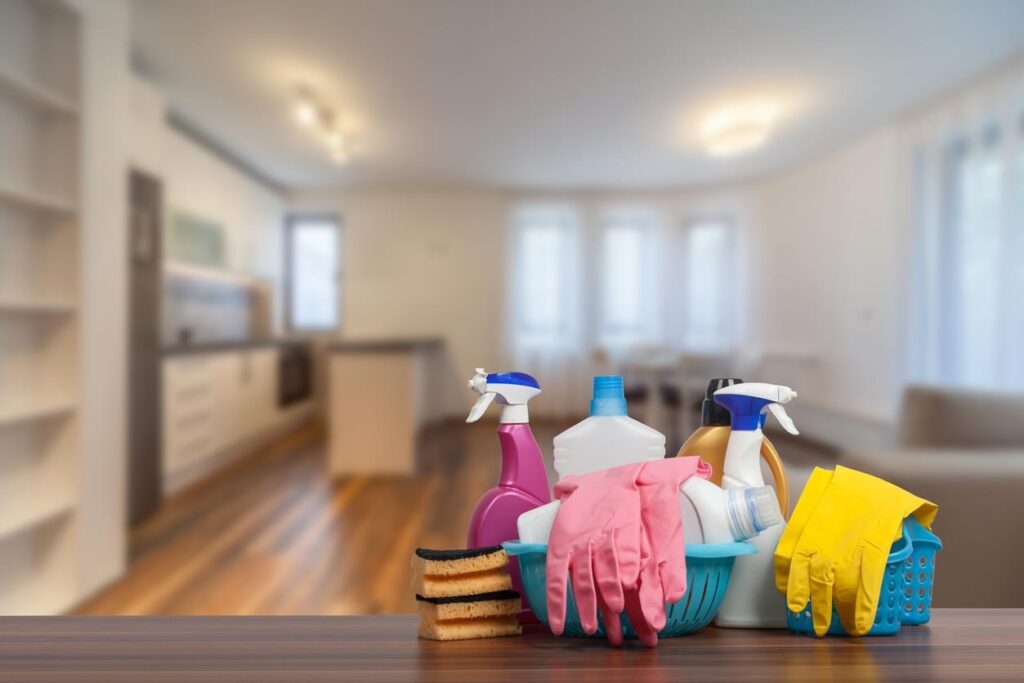
College students can save time and money with smart laundry and cleaning management throughout the semester. A good plan for these tasks creates a healthy living space and helps you stay within budget.
Laundry basics and storage
Space-saving laundry solutions work best for students. A collapsible hamper that has sorting sections helps you organize different types of clothes. Detergent pods work better than big liquid bottles, and mesh bags keep delicate clothes safe in shared washing machines.
Essential Item Recommended Type Laundry Bag Polyester leno-weave Detergent Pods or powder form Drying Solution Collapsible rack Stain Treatment Portable pen Room cleaning essentials
Room cleaning essentials
Your simple cleaning kit needs microfiber cloths, disinfectant wipes, and an all-purpose cleaner. Dorm residents should keep these items handy:
- Disinfectant wipes to clean surfaces quickly
- Glass cleaner for mirrors and windows
- Small broom and dustpan set
- Microfiber duster for electronics
Money-saving cleaning hacks
Smart cleaning strategies stretch your student budget further. Cold water washing and air-drying clothes can cut energy costs while making clothes last longer. Pro tip: Dryer sheets can serve multiple purposes – from freshening shoes to dusting blinds. Mix vinegar and water to create an affordable all-purpose cleaner that costs nowhere near commercial products.
A daily five-minute cleaning routine prevents the need for long cleaning sessions. This habit keeps your living space healthy and makes your belongings last longer.
Kitchen and Food Storage
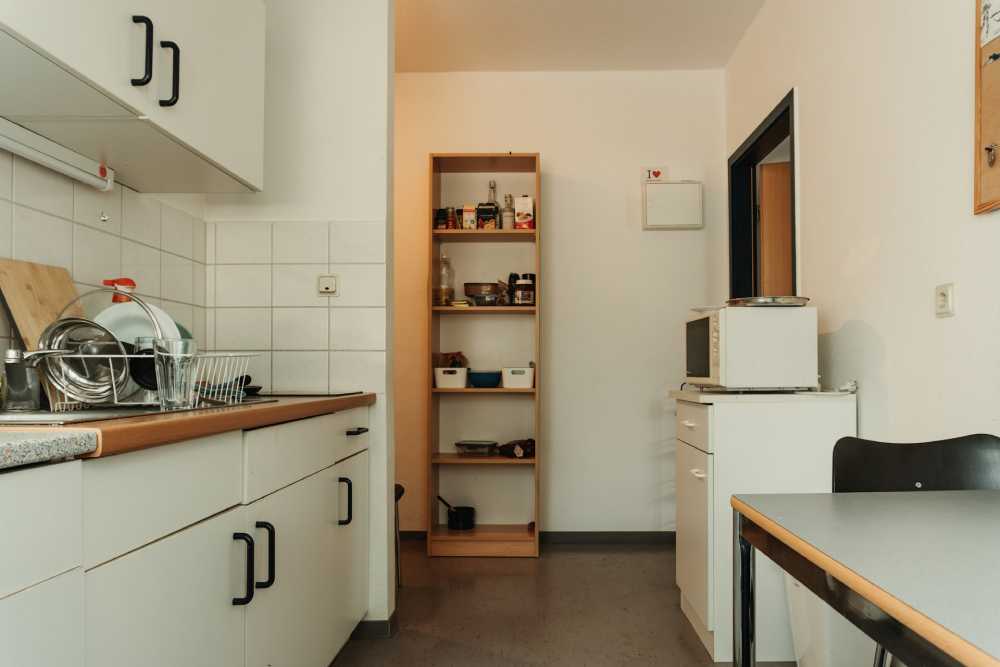
Students need a functional kitchen space in college that meets safety regulations and fits within space constraints. Fire safety stands as the main goal, and students must know which cooking appliances their dorms allow.
Approved cooking appliances
Colleges typically permit small appliances without open flames or heating elements. These commonly allowed items include:
Appliance Power Limit Average Cost Microwave 700-800 watts USD 70-100 Mini Fridge Standard dorm size USD 100-150 Electric Kettle Standard USD 20-40 Food storage solutions
Food storage solutions
Limited dorm space demands smart storage options. Glass food storage containers keep food fresh and visible effectively. Students should get:
- Airtight containers for dry goods
- Microwave-safe containers for leftovers
- Clear storage bins that make identification easy
Meal prep essentials
Weekend meal preparation helps students save time and money during hectic weekdays. Pro tip: Students can prepare large batches of freezer-friendly meals like chili or lasagna and reheat them throughout the week. Measuring cups, food storage containers, and basic utensils make up the essential meal prep toolkit.
A rolling cart with multiple tiers works well as a mobile pantry. This solution helps organize snacks, cooking tools, and appliances while making the most of vertical space in small dorm rooms. A water filter pitcher proves useful to ensure clean drinking water access.
Clothing and Storage Solutions
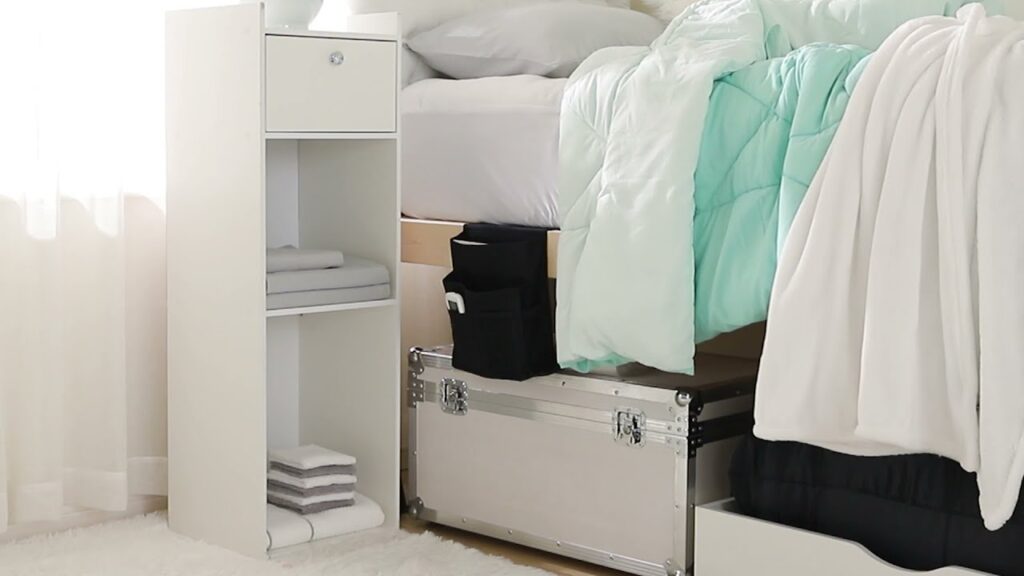
A student’s ability to store clothes efficiently ranks as a vital part of college preparation, particularly in cramped dorm rooms. The transition to college life becomes substantially smoother when students become skilled at organizing their wardrobe.
Seasonal wardrobe planning
Students can maximize their limited closet space with a capsule wardrobe system. A practical college wardrobe should contain 36 versatile pieces, all but one of these items being underwear and accessories. The clothes should fit into clear categories: everyday wear, athletic gear, and special occasion outfits. Pro tip: Your closet stays organized throughout the year when you rotate clothes seasonally using under-bed storage.
Space-saving storage ideas
Smart dorm storage solutions help you use every available inch. Here’s what works best:
Storage Solution Best Use Case Under-bed bins Seasonal clothing Over-door hooks Bags and jackets Hanging organizers Daily essentials Drawer dividers Small accessories Essential clothing items
Essential clothing items
Your college wardrobe needs foundational pieces that work for multiple occasions. Dark-wash jeans, simple t-shirts, and versatile sweaters are the foundations of a practical college wardrobe. Students need at least one business-appropriate outfit for interviews and presentations.
The space under your bed offers valuable storage room where seasonal clothes and extra bedding fit perfectly in zipper bags. Space-saving tip: Closet space increases up to 50% when you switch from plastic to slim velvet hangers. Closet organizers with drawers can eliminate the need for a separate dresser in small dorm rooms.
First Aid and Medical Supplies
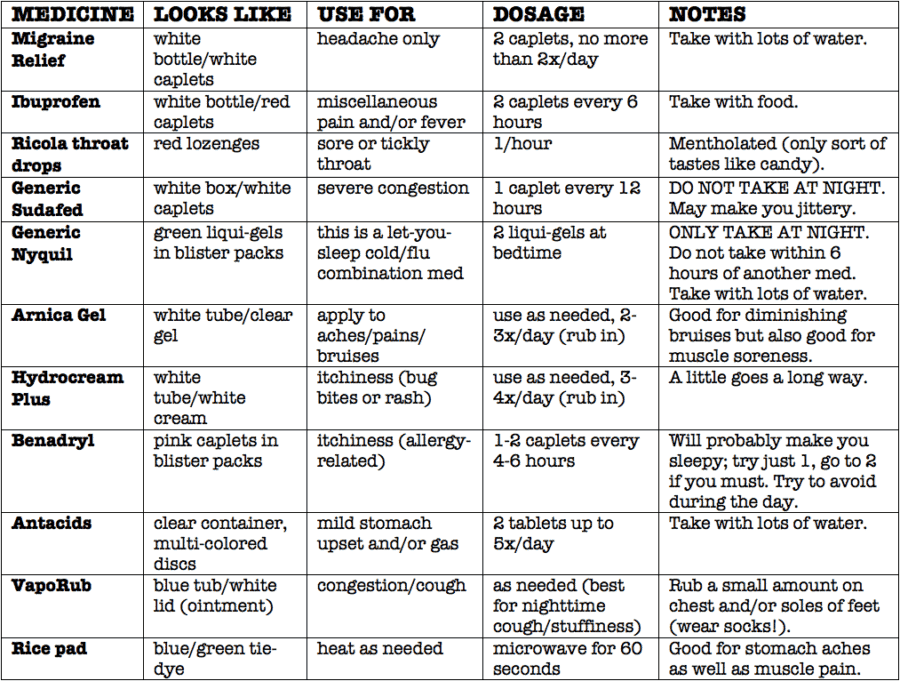
Students living away from home need a well-stocked medical kit and a proper health documentation system. Studies reveal that only 8% of college students keep their prescription medications in a locked space. This makes proper organization of medical supplies vital.
Simple medical kit essentials
A detailed first aid kit belongs in every dorm room. Here’s what students need:
Category Essential Items Pain Relief Acetaminophen, ibuprofen Wound Care Bandages, antibiotic cream Emergency Items Digital thermometer, instant ice packs Wellness Cough medicine, allergy medication Prescription medication storage
Prescription medication storage
Students who take prescription medications should use day-of-the-week pill containers. The remaining supply needs to be locked away. Security tip: A small lockbox or safe protects your medications in shared living spaces. Phone reminders help students stick to their medication schedules and track refills.
Health insurance documents
Students need a good system to manage their health insurance documentation. They should:
- Keep digital copies of insurance cards on their phones
- Store physical copies in a secure location
- Maintain a list of emergency contacts and local healthcare providers
- Include immunization records and relevant medical history
Students taking prescription medications that interact with alcohol should know the potential risks. They need clear documentation of their medication schedule. Students with chronic conditions should let their Resident Advisor know about emergency medications and where they’re stored.
Room Decor and Comfort Items
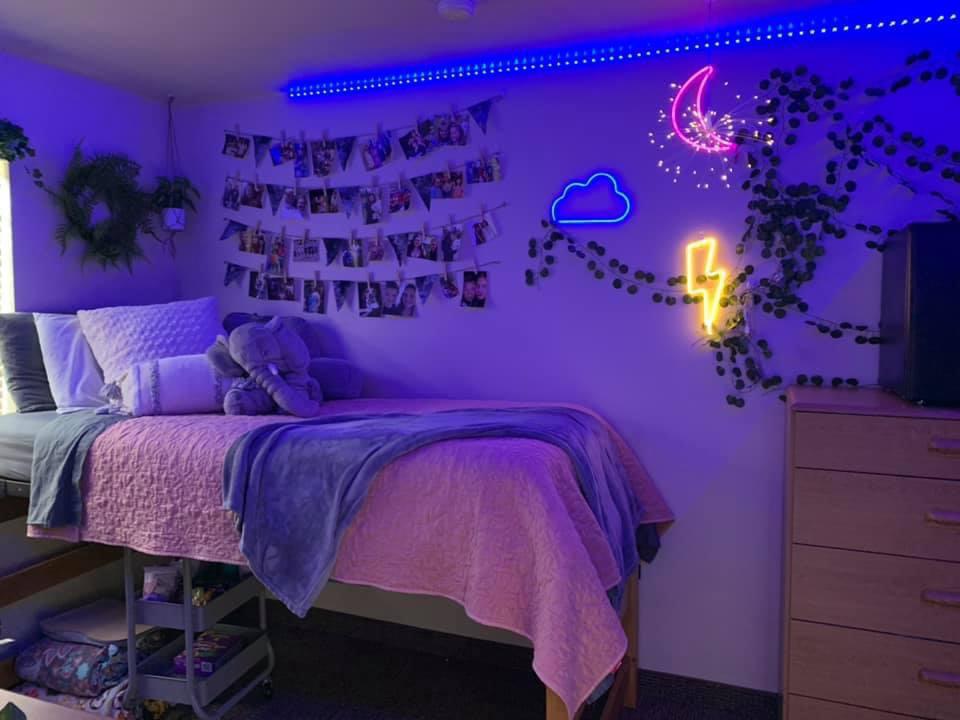
You don’t need to spend a fortune to turn a simple dorm room into a cozy living space. Students can create a welcoming atmosphere that follows campus rules and fits their budget.
Budget-friendly decoration ideas
Thrift stores and discount retailers are a great way to get affordable dorm decor. Quality items like throw pillows, area rugs, and wall art come at huge savings. Removable wallpaper sheets work well for wall decorations without damaging the surfaces. Money-saving tip: Room decor prices drop substantially during January “white sales”.
Lighting solutions
The right lighting can revolutionize both study sessions and downtime. Here’s what students usually need:
Lighting Type Purpose Average Cost Desk Lamp Study focus USD 15-30 String Lights Ambiance USD 10-20 Floor Lamp Room brightness USD 29-38 Harsh fluorescent lighting in most dorms can make you drowsy during the day. LED desk lamps with adjustable settings help create better study lighting and keep your roommate’s schedule in mind.
Personal touches
Plants work wonders in making spaces feel like home. Research shows they reduce stress and boost creativity. Students should look into:
- Easy-care options like succulents or air plants
- Photo displays of friends and family
- Meaningful artwork or posters
Removable mounting solutions and self-adhesive hooks help hang decorations without causing damage. Style tip: A photo wall filled with special memories helps make the space yours and eases homesickness.
Important Documents and Files

Document management is the life-blood of successful college life. Students lose access to their records at the time they turn 18. A systematic approach helps students organize their physical and digital documents effectively.
Required paperwork checklist
Here’s how students should organize their documents into these key categories:
Document Type Purpose Storage Priority Medical Records Healthcare access High security Financial Documents Banking/Aid High security Academic Records Course registration Medium security Personal ID Daily identification High security Digital backup solutions
Digital backup solutions
Cloud storage offers a secure backup location for your important files. Students should think over these backup strategies:
- Use encrypted cloud services for sensitive documents
- Keep multiple versions of critical files
- Enable automatic syncing for academic documents
- Store digital copies of physical documents
Document organization system
Your physical documents need proper storage conditions in a cool, dry environment. Security tip: A fireproof lockbox protects your original documents while digital copies remain available. A simple expanding file system with clear labels helps maintain order daily.
Students should store documents flat to avoid damage – not folded or rolled. Password protection becomes vital for digital documents with private information, especially when sharing electronic devices or living in common spaces.
Entertainment and Social Items
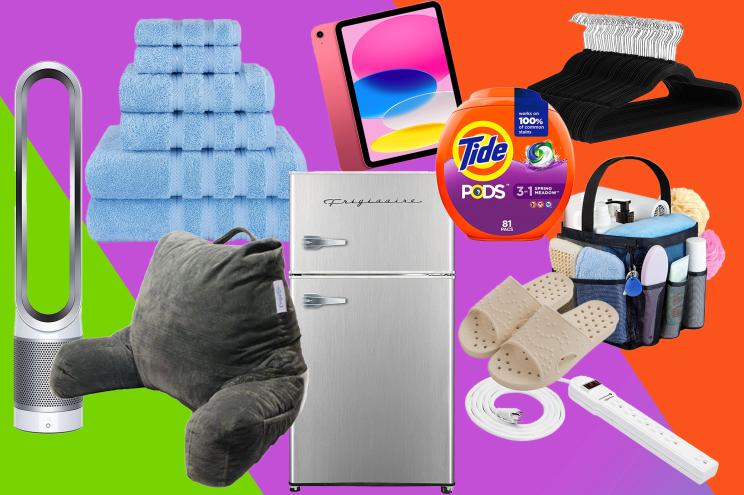
Entertainment choices can make or break your college dorm life. They work as stress relievers and help students connect socially. Smart entertainment picks help students balance their academic work with much-needed breaks.
Gaming and entertainment essentials
A compact entertainment setup is crucial for modern dorm life. Students should think about these core components:
Item Purpose Average Cost Bluetooth Speaker Room audio USD 50-150 Streaming Device Content access USD 30-50 Gaming Console Entertainment USD 300-500 Social activity supplies
Social activity supplies
Board games and group activities promote community building in dorm settings. Popular choices include:
- Classic board games to entertain groups
- Card games for spontaneous social gatherings
- Portable party speakers with LED effects
- Multi-player video games for gaming nights
Students need thoughtful planning to create an inviting social atmosphere. A quality speaker system can turn a dorm room into a social hub. The Sylvania SP263G offers both Bluetooth connectivity and FM radio features. Movie buffs will find that a streaming device provides endless entertainment while saving space.
Portable projectors are great for students who organize movie nights. These compact devices create an instant cinema feel that’s perfect for floor-wide social events. Pro tip: Your movie nights become more comfortable when you grab some floor cushions or bean bags.
Fitness and Wellness Gear
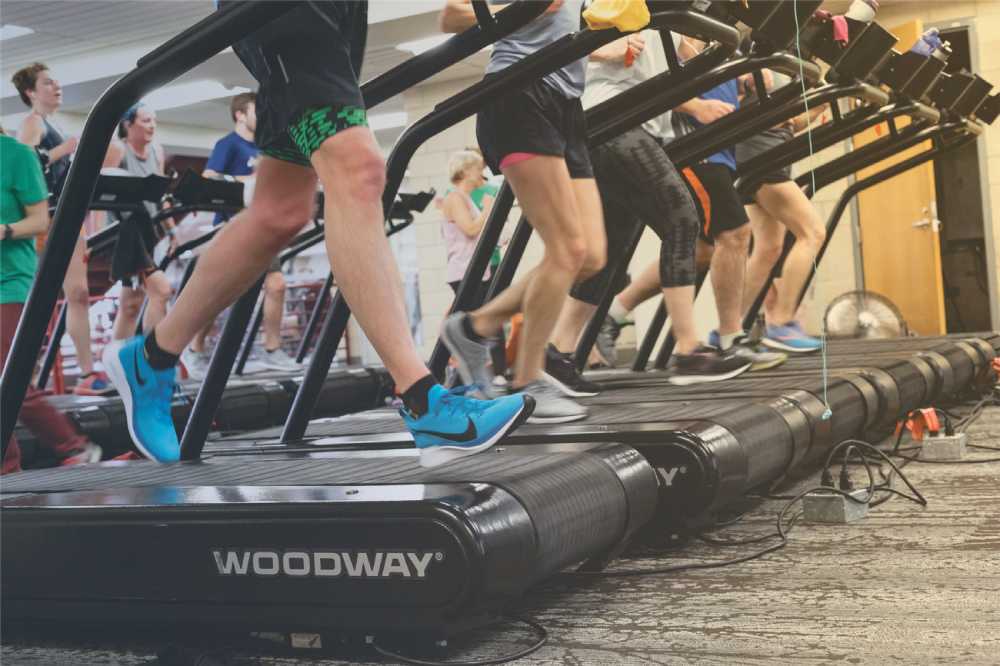
College students can stay fit without breaking the bank on gym memberships or bulky equipment. The right fitness gear lets you maintain your wellness routine in your dorm room.
Compact exercise equipment
Students need space-efficient workout gear in their dorms. Research shows resistance bands and adjustable dumbbells work best in small spaces. You can set up a workout area with:
Equipment Benefits Average Cost Resistance Bands Portable, versatile USD 15-30 Adjustable Dumbbells Space-saving USD 100-200 Yoga Mat Multi-purpose USD 20-40 Foldable Exercise Bike Compact cardio USD 150-300 Wellness tracking tools
Wellness tracking tools
Digital wellness apps give students a great way to track their health. Many universities provide health apps that support physical, mental, and financial wellbeing. Key features include virtual nutrition counseling and unlimited wellness assessments through platforms like AcademicLiveCare.
Outdoor activity essentials
Students who spend time outdoors show better concentration levels and less stress. Your outdoor gear should include:
- Budget-friendly athletic wear that works in any weather
- Portable water bottles and cooling towels
- Comfortable shoes that handle campus walks
- Simple first-aid supplies for outdoor activities
Quality activewear doesn’t have to be expensive. Many brands offer stylish options under USD 50. University outdoor clubs let you access specialized equipment without buying your own gear.
Emergency and Safety Items
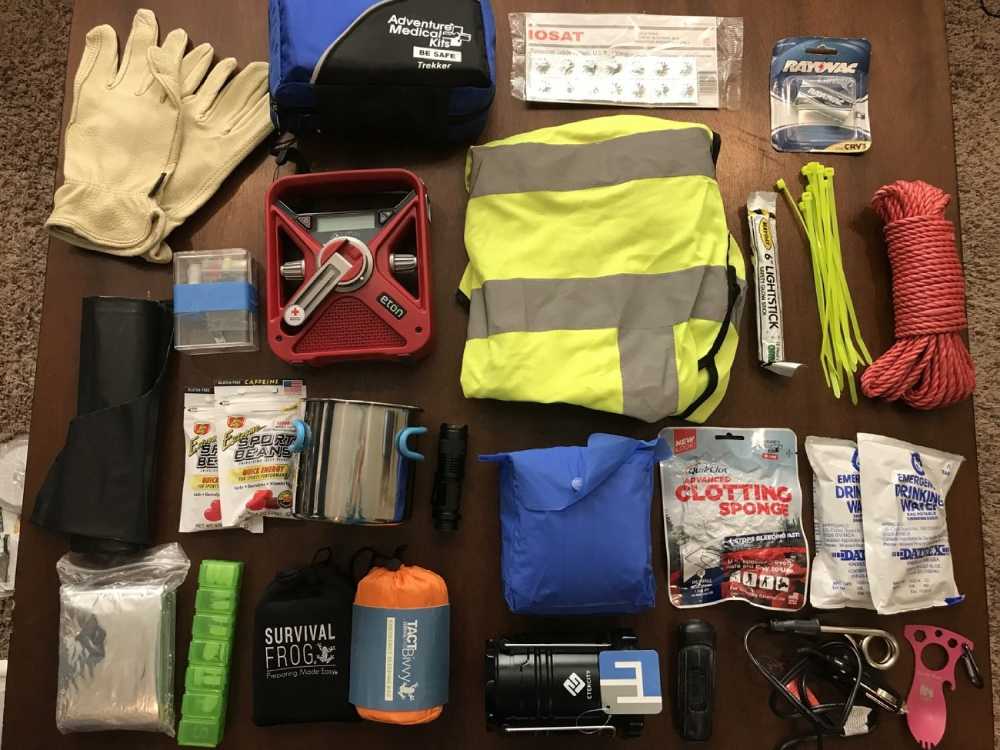
College safety preparation stands at the forefront of campus planning. Recent data reveals 21,235 reported crimes in college institutions nationwide in 2020. A well-planned safety system helps students handle unexpected situations.
Safety equipment checklist
Students need these items in their safety kit:
Item Purpose Priority Level Personal Alarm Emergency alert High Flashlight Power outages Medium First Aid Kit Minor emergencies High Door Stop Alarm Room security High Emergency contact information
Emergency contact information
Studies show that up-to-date and available emergency contact information can substantially affect safety outcomes. Students should take these steps:
- Register with campus emergency alert systems
- Store emergency contacts in their phones under “ICE” (In Case of Emergency)
- Keep digital and physical copies of insurance information
- Update contact details at the beginning of each semester
Security essentials
Fire safety needs your attention. Data shows that 75% of campus fires start in kitchen or cooking areas. Key security items include a personal safety alarm with 140-decibel sound and a video doorbell to monitor visitors. Campus security should have records of your valuable electronics since dorm burglaries make up 70% of all dorm crimes.
Students can add door handle alarms and window sensors to enhance their protection. These devices add security while following dorm rules about room modifications.
Money Management Tools
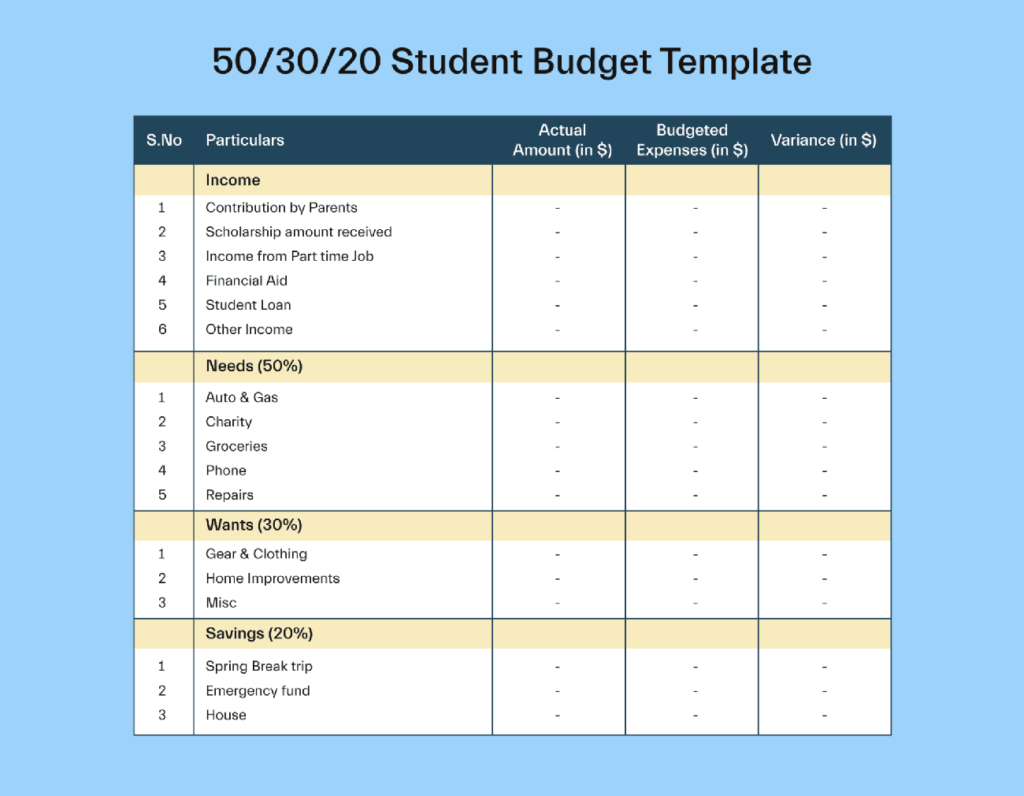
College students need strong financial literacy skills. Recent studies show that 86% of students wish they had learned more about managing money before starting college.
Banking essentials
Students need checking and savings accounts before they arrive on campus. A checking account lets them access funds easily through debit cards and mobile banking. A savings account builds emergency funds and earns interest.
Account Type Primary Use Key Features Checking Daily expenses Debit card, mobile banking Savings Emergency fund Interest earning, limited withdrawals Money Market Long-term savings Higher interest rates Budgeting apps and tools
Budgeting apps and tools
The digital world has changed how students manage their money. Popular apps now include:
- Automatic expense tracking with customizable categories
- Bill payment reminders and account balance alerts
- Goal setting and progress monitoring
Financial document organization
Students need a secure system to manage their financial records. Research shows that organizing documents into three categories – bills, banking, and financial aid – helps students control their finances better. Security tip: Students should keep digital copies of all important financial documents in an encrypted cloud storage system, with automatic backup enabled.
Mobile banking has become essential for daily transactions, and 73% of college students use banking apps to manage their money. Students should never use public WiFi for financial transactions and must enable two-factor authentication to stay secure.
Sustainable Living Essentials

The average college student adds 640 pounds of waste each year to our environment. Students can cut down this number by a lot through smart choices before they head to campus.
Eco-friendly alternatives
The right eco-friendly picks make a huge difference in college life. Bedding made from organic cotton beats synthetic materials for the planet. Smart shopping tip: Students can swap regular items with earth-friendly versions. Bamboo utensils, cloth napkins, and reusable coffee mugs pull double duty – they’re useful and cut down waste.
Reusable item checklist
These must-have reusable items help create an eco-friendly college life:
Item Purpose Environmental Impact Water Bottle Daily hydration Reduces plastic waste Mesh Bags Laundry/shopping Eliminates single-use bags Food Containers Meal storage Minimizes food packaging Coffee Mug Beverage storage Reduces disposable cups Energy-saving products
Energy-saving products
Smart power use helps both the planet and your wallet. Here are some affordable power-saving options:
- LED bulbs use 90% less power than old-school options
- Smart power strips that shut off automatically
- Energy Star appliances cut power use by 20-40%
Pro tip: Natural light boosts productivity and saves energy during daytime study sessions. A desk near the window and light-colored curtains help maximize sunlight.
Things to Bring to College Frequently Asked Questions
What do I need to bring for college?
When you’re getting ready for college, it’s important to think about both your academic and daily needs. You’ll need things like notebooks, pens, and a laptop, but also don’t forget items for your living space, like bedding, toiletries, and a few basic kitchen items. Make sure to have personal documents handy, like your ID and any insurance or financial info, just in case.
What should a college freshman take?
As a freshman, you’ll want to make sure you have everything you need to feel settled in your new space. Bring your bedding, a laptop, school supplies, and maybe even a few items to help you get to know your new surroundings—like a favorite mug or some pictures from home. It’s always good to have the basics, but also pack things that make your new room feel like yours.
What should I take the first day of college?
For your first day, keep it simple but be prepared. You’ll need your backpack with notebooks, pens, and any materials for your classes. It’s also a good idea to bring along your student ID, some snacks, a water bottle, and any textbooks you might need. Most importantly, wear something comfortable that helps you feel confident as you meet new people.
Where to start packing for college?
Packing for college can feel overwhelming, but starting with a checklist can help. Begin with the larger items, like your bedding and a desk lamp, and then move on to things like clothes, toiletries, and school supplies. Also, check in with your dorm to see what’s provided and what you’re expected to bring to avoid overpacking.
What size rug for dorm room?
A 5×7-foot rug is a popular choice for dorm rooms because it’s just the right size to fit under a bed or add some warmth to the floor. However, depending on your space, you might want to go a bit smaller or larger. Make sure it’s easy to clean, as dorm life doesn’t always give you access to cleaning services.
How many clothes to pack for college?
When it comes to clothes, you don’t want to overdo it but you also don’t want to run out of options. Aim for enough to last you a week or so between laundry days—think about 7-10 shirts, 4-5 pairs of pants, and a few sweaters or jackets. Keep in mind the climate at your school, and don’t forget to check out laundry options before you start packing.
Do you bring toilet paper to college?
While many dorms provide toilet paper, it’s never a bad idea to bring your own, just in case there’s a shortage or a delay in the dorm’s supply. You may want to keep a small stash in your room for peace of mind, and depending on your dorm, you could end up needing to stock up throughout the semester.
How many towels do I need for college?
For towels, you’ll want to have at least two bath towels—one to use while the other is drying. You’ll also need a couple of hand towels and washcloths for your everyday needs. Extra towels come in handy for laundry day, so you’re not left with nothing to dry off with.
What bag do you bring to college?
A sturdy backpack is a must for carrying your books, laptop, and other supplies. You might also want a tote bag or a messenger bag for extra storage, especially for things like groceries or gym gear. If you travel home for the weekends, think about a larger bag for packing clothes and essentials.
What should I bring with me to my dorm?
When it comes to your dorm room, pack things that will make the space feel functional and comfortable. Of course, you’ll need your bedding, school supplies, and toiletries, but think about adding personal touches too, like pictures, a few decorations, or a small fridge. You’ll want to make it feel like your own little space away from home.
What to pack for a dorm room?
Packing for a dorm room is about balancing functionality and comfort. Essentials include bedding, school supplies, and a desk lamp. You might also want to bring some storage solutions for your clothes and toiletries. Personal items like decorations, a cozy blanket, or a rug can really help make the room feel homey.
How many shirts should I bring to college?
It’s a good idea to bring about 7-10 shirts to college, depending on your personal style. You’ll want a mix of casual t-shirts, long-sleeve shirts, and maybe a couple of dressier options for special events. This way, you’ll have plenty of options without overpacking, and you can always do laundry when you need to.



